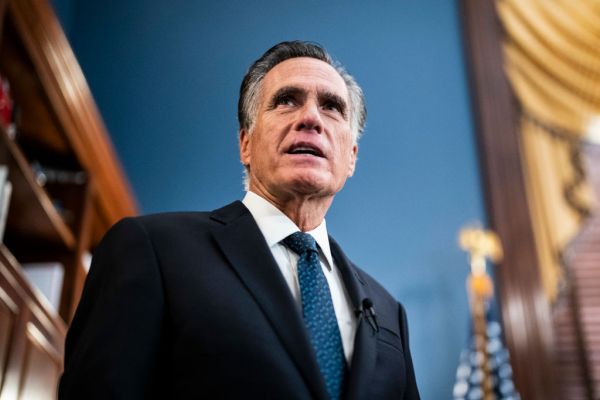Happy Tuesday! Welcome to Day 2 of what writer Helena Fitzgerald has coined “Dead Week.”
Can you write a daily newsletter when there is no news? We’re trying our best!
Quick Hits: Today’s Top Stories
-
After updating its guidance for health care workers last week, the Centers for Disease Control on Monday shortened its quarantine and isolation recommendations—from 10 days to five—for all Americans who test positive for COVID-19, provided they are asymptomatic. “CDC’s updated recommendations for isolation and quarantine balance what we know about the spread of the virus and the protection provided by vaccination and booster doses,” CDC Director Dr. Rochelle Walensky said. “These updates ensure people can safely continue their daily lives.”
-
The NBA also updated its COVID-19 protocols on Monday to allow vaccinated players and coaches who test positive for the virus but are asymptomatic to return to action after two negative tests 24 hours apart or six days, whichever comes first.
-
President Biden on Monday signed into law the approximately $770 billion National Defense Authorization Act for fiscal 2022.
-
The Taliban dissolved Afghanistan’s Independent Election Commission, Electoral Complaint Commission, Ministry for Peace, and Ministry of Parliamentarian Affairs on Sunday, with spokesman Bilal Karimi telling reporters they are “unnecessary institutes for the current situation in Afghanistan.”
The Expanded Child Tax Credit: One-Hit Wonder?

With the ill-fated Build Back Better Act, Democratic lawmakers were seeking not only to create new entitlements—universal, taxpayer-funded preschool education chief among them—but to extend several existing ones, as well. In a piece for the site today, Harvest takes a look at the fate of the expanded child tax credit, which the BBB would have continued for one year. As it stands, the final checks were sent to American families on December 15.
The federal child tax credit (CTC) itself is not new—it was created in 1997 and doubled in 2017 by Republicans’ Tax Cuts and Jobs Act (TCJA)—but Democratic lawmakers expanded the program substantially in the American Rescue Plan (ARP) earlier this year.
After TCJA but prior to ARP, parents were eligible to receive up to $2,000 in tax credits every year for each child under 17 they claim as a dependent. The benefit began to phase out at $200,000 of annual income for single filers and $400,000 for married couples filing jointly, and families needed to earn only $2,500 per year in order to qualify. Parents claiming the credit would receive it as one single refund at tax time, and the credit was partially refundable, meaning families with a tax burden smaller than the size of their credit could still receive up to $1,400 per child.
The American Rescue Plan—passed along party lines through the reconciliation process back in March—significantly increased the program’s benefits, raising the maximum credit to $3,000 for every child aged six to 17, and $3,600 for children under 6. The new credit was fully refundable, and for 2021, half of it was paid out in monthly installments, with the remainder set to be meted out in families’ annual tax return.
According to the IRS, about 35 million families received these monthly checks, which were for up to $250 per child aged 6 to 17, and up to $300 per child below the age of 6.
But the ARP expanded the CTC only through 2021, as Democrats expected the program to be popular enough they could easily extend it again later in the year. Sen. Joe Manchin of West Virginia had other plans.
As we wrote in a TMD earlier this month, the Build Back Better Act (BBB) relied on a series of expiration dates and sunset clauses to artificially shrink the overall size of the legislation. Purely as written, the nonpartisan Congressional Budget Office (CBO) estimated BBB would add about $160 billion to the deficit over the next decade. But if all the programs were extended for the full 10 years, the CBO projected the bill would increase the deficit by $3 trillion. The child tax credit ($185 billion for one year, $1.6 trillion for 10) accounted for most of the discrepancy.
From two Fridays ago:
Manchin isn’t opposed to the enhanced credit—which has been depositing $250 to $300 per child in most parents’ bank accounts every month since July—in and of itself, saying this week he “believes” in it and thinks it “works great to help people.” But Manchin is frustrated by Democrats’ efforts to use what he called “shell games” and “budget gimmicks” to artificially shrink the size of BBB. “None of us should ever misrepresent to the American people what the real cost of legislation is,” he declared last month.
Manchin’s fellow Democrats are furious with his stance. Senate Majority Whip Dick Durbin told reporters yesterday he is “stunned” by Manchin’s opposition to a one-year extension to the child tax credit. Sen. Richard Blumenthal said it’d be “unconscionable” to let the credit expire, and Sen. Sherrod Brown said its place in BBB was “non-negotiable.” If that’s true—and Manchin holds strong on his $1.75 trillion red line—then Democrats will need to cut nearly all other priorities out of the bill, as, again, 10 years of the tax credit costs slightly less than $1.6 trillion. You can see why this got punted into 2022, and why Republican Sen. Lindsey Graham thinks the bill is “dead forever.”
The CTC won’t go away entirely without an extension—Republicans’ TCJA changes aren’t set to expire until the end of 2025—but families have already grown accustomed to the ARP’s changes to the program.
Brandon and Melissa Odell live in an Atlanta suburb with their two daughters, Evelyn and Ellie.
Brandon works as a health care actuary. Melissa taught first grade until their youngest was born with special needs, when she left her job. Ellie, now 5 years old, has Down syndrome and has undergone several open-heart surgeries.
The family has qualified for the child tax credit since Ellie’s birth, when they transitioned to one income. The $550 they’ve received every month under the ARP is about $200 more than what they were receiving before.
“It’s not the difference between paying our bills and not, but it’s the difference between doing extra things for our kids and not,” Tom Odell told Harvest. Medicaid and private insurance cover services for Ellie like physical and speech therapy, but the credit has given them the wiggle room to provide swimming and piano lessons for Evelyn, their 7-year-old.
“While my family is fine financially, we all notice the rising prices at the grocery stores,” Odell said. “For families that are middle-class, the loss of that extra $200 or so a month, coupled with rising prices for literally everything, is a real gut punch.”
The Odells are far from alone.
Jeremy and Erin Calcara—parents to five children—live in Lincoln, Nebraska, where Jeremy works for the state government as a training specialist and Erin works part-time for an education research project at the University of Nebraska.
“We’re blessed to be able to pay our bills every month, but there isn’t usually much left in the bank account once the bills have been paid,” Jeremy Calcara told Harvest. “Especially in these last few months of the year, it’s pretty common for us to be a month or two behind on bills, just paying the minimum possible to try to make it until we get our tax return to get everything back to zero. We haven’t had that problem yet, which has been a nice break from stress.”
The extra money hitting their bank account each month since July has also allowed them to “say yes to getting pizza or picking up tacos after a long day in a way that we usually don’t have,” Calcara added. They also were able to spring for tickets to a couple of Royals games and attend some conferences. And when their dishwasher broke, they were able to pay to have a new one installed.
As evidenced by both the ARP and TCJA, the idea of a child tax credit in and of itself is not particularly partisan. But Democrats and Republicans differ on how it should be structured.
As BBB fell apart last week, GOP Sen. Mitt Romney re-upped a family policy proposal he put forth earlier this year. “The Administration has an opportunity to do what it failed to do before—actually work with Republicans and Democrats on a lasting, fiscally-responsible CTC reform,” he said. “Legislation that impacts something as important as our children must be done on a bipartisan basis.”
We covered Romney’s deficit-neutral Family Security Act back in February, but here’s a quick refresher:
The proposal is relatively simple, as far as federal welfare programs go. Parents would receive monthly cash benefits—$350 for children ages zero to five, $250 for children ages six to 17—and they would become eligible for them four months prior to a child’s due date. A family’s total annual benefit would be capped at $15,000, meaning the program’s diminishing returns begin to kick in after four or five children. Payouts would begin to slowly phase out at set income thresholds: $200,000 for single-filers, and $400,000 for joint-filers.
It’s paid for in large part by consolidating what it calls “overlapping and often duplicative” federal programs into one monthly payment. To remain deficit-neutral, the plan would eliminate the head-of-household tax filing status, Child and Dependent Care Credit, the Temporary Assistance for Needy Families (TANF) program, and the State and Local Tax (SALT) deduction. It would also reform eligibility for the Supplemental Nutrition Assistance Program and the Earned Income Tax Credit.
Some progressive policy analysts prefer Romney’s plan—which operates more as a child allowance than a tax credit—even to the ARP’s CTC expansion. But the proposal is far from achieving majority support on the Republican side of the aisle.
Angela Rachidi, a senior fellow on poverty studies at the conservative American Enterprise Institute, told The Dispatch a proposal without a work requirement is unlikely to make headway on the right. “Congress could get Republican support for a tax credit that was targeted to low- or moderate-income families and was connected to work,” she said. “The tax credit should be for working families, [and] it should be based on people paying into the tax system.”
Rachidi worked in the welfare system for almost a decade, as the deputy commissioner for policy research for New York City’s department of social services. “I understand the desire to make our government programs as simple and with as little bureaucracy as possible. But the downside is that you’re talking about extremely vulnerable, oftentimes dysfunctional families,” Rachidi said. “If you just start sending money to these households with no connection to a social service agency … there’s potential for some downsides—especially for the children.”
Crucially, at least one Democratic senator agrees.
“There’s no work requirements whatsoever,” Manchin told CNN of the expanded child tax credit back in September. “There’s no education requirements whatsoever for better skill sets. Don’t you think, if we’re going to help the children, that the people should make some effort?”
The Huffington Post reported last week that the West Virginian has also expressed concern to his colleagues about tax credit recipients spending the money on drugs. He hinted at that apprehension in a recent radio interview. “Make sure the money follows the child, so if the grandparent is raising the child, they’re getting the money and not the parent,” he told MetroNews.
This policy debate is far from over, and after six months, each side can point to studies backing up their respective positions.
In August, Columbia University’s Center on Poverty and Social Policy issued a report that found the expanded child tax credit on its own “kept approximately 3 million children from poverty” in its first month, and—in conjunction with other COVID-19 relief programs—has cut the child poverty rate nearly in half.
An October University of Chicago study, meanwhile, found that the expanded CTC would reduce child poverty by 34 percent “ignoring any behavioral responses,” but that the increased payments would lead 1.5 million parents to exit the labor force. “The decline in employment and the consequent earnings loss would mean that child poverty would only fall by 22% and deep child poverty would not fall at all with the CTC expansion,” it concludes.
Worth Your Time
-
In an essay for The Atlantic, doctoral student Victoria Parker details research she and several peers conducted last year showing Americans on both sides of the political aisle overestimate the extremism of those who disagree with them. “The gap that we identified between what partisans really think and what their opponents think they think shows up again and again—but only on a particular kind of issue,” she writes. “People have a more accurate view of the other side’s position on many standard policy issues, such as taxes or health care. But specifically on culture-war issues, partisans are likely to believe a caricatured version of the opposing side’s attitudes. These misconceptions have hardened into enduring stereotypes: liberal snowflakes and free-speech police, conservative racists and ‘deplorables.’ … Where do these ideas come from? Partisan media outlets have an incentive to stoke their audience’s outrage by making extreme views seem commonplace. In our work, we saw that the more people reported consuming partisan news (a category in which, drawing on the work of other researchers, we included Fox News and MSNBC), the more they believed in a caricatured version of the other side.”
-
Dr. Daniela Lamas, an ICU doctor at Brigham and Women’s Hospital in Boston, has a heartfelt—and ultimately hopeful—piece in The New York Times about her experience treating COVID-19 patients and how she sees the pandemic coming to an end. “What will victory over this virus look like?” she asks. “I used to think that I would care for one final coronavirus patient, but I realize now that is not the case. This virus will become endemic, as some viruses do, and when each winter comes, I will see a few patients with Covid-19 who are sick enough to wind up in the intensive care unit, the unvaccinated or the immune compromised or the unlucky. We will care for them using the protocols that we have honed over the past two years. No one will react with panic or fear or anger; it will be expected, as it is with influenza or a host of other respiratory viruses. That is not where we are yet. But we will get there.”
Presented Without Comment
Also Presented Without Comment
Toeing the Company Line
-
As populist conservatives have grown ever more in favor of regulating corporations through antitrust legislation and other measures, they’ve accused classical liberals of being naive about big business. Iain Murray of the Competitive Enterprise Institute argues that most classical liberals view themselves as pro-market, not pro business.
Let Us Know
Have you been a beneficiary of the expanded child tax credit over the past six months? What are your thoughts on its impending expiration?
Reporting by Declan Garvey (@declanpgarvey), Andrew Egger (@EggerDC), Charlotte Lawson (@lawsonreports), Audrey Fahlberg (@AudreyFahlberg), Ryan Brown (@RyanP_Brown), Harvest Prude (@HarvestPrude), and Steve Hayes (@stephenfhayes).






Please note that we at The Dispatch hold ourselves, our work, and our commenters to a higher standard than other places on the internet. We welcome comments that foster genuine debate or discussion—including comments critical of us or our work—but responses that include ad hominem attacks on fellow Dispatch members or are intended to stoke fear and anger may be moderated.
You are currently using a limited time guest pass and do not have access to commenting. Consider subscribing to join the conversation.
With your membership, you only have the ability to comment on The Morning Dispatch articles. Consider upgrading to join the conversation everywhere.